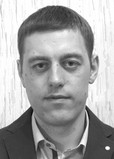Loser-free competitive model based on Nash equilibrium
Фотографии:
ˑ:
A.L. Voynich1
PhD, Associate Professor А.I. Chikurov1
Dr.Hab., Professor V.G. Shilko2
PhD, Associate Professor S.V. Radaeva2
M.V. Petrova1
1Siberian Federal University, Krasnoyarsk
2Tomsk State University, Tomsk
The study gives theoretical and practical grounds for a mass sport competition model based on the Nash equilibrium. The model is essentially designed on the non-cooperative equilibrium concept that basically implies each player being prepared to sacrifice, to a reasonable degree, own gain for the joint benefit in the competitive process. The Nash-equilibrium-based competitive model was tested by a 3-year-long educational experiment at Magma Sport Base in Krasnoyarsk. 7-15 year-old males (n=30) were sampled for the study. As required by the Nash equilibrium concept, the children’s competitions were designed to offer a few competitive categories and formats to secure some win for each competitor. We found the proposed Nash-equilibrium-based mass competitive model being beneficial as verified by the sample progress in the precompetitive emotionality self rates that totaled 32.25 points on the Wessman-Ricks scale. In case of the total competitions, the score made 26.28 points (23% lower). The proposed Nash-equilibrium-based competitive model is recommended for application as beneficial.
Keywords: physical education, sports, mass sports, Nash equilibrium.
References
- Gubko M.V., Novikov D.A. Teoriya igr v upravlenii organizatsionnymi sistemami [Game theory in management of organizational systems]. RAS IPU. 2nd ed., Rev., Sup. Moscow, 2005, 138 p.
- Zakharov A.V. Teoriya igr v obschestvennykh naukakh. Uchebnik dlya vuzov [Game theory in social sciences. Textbook for higher schools]. NRU of Higher School of Economics. Moscow: HSE publ., 2015, 304 p.
- Karelin A.A. Bolshaya entsiklopediya psikhologicheskikh testov [Great encyclopedia of psychological tests]. Psikhodiagnostika: praktika. Metodika 'Samootsenka emotsionalnykh sostoyaniy [Psychodiagnostics: practice. Methodology 'Self-assessment of emotional states']. Moscow: Eksmo publ., 2007. Vol. 2, pp. 39 - 40.
- Strategiya razvitiya fizicheskoy kultury i sporta v Rossiyskoy Federatsii na period do 2020 g. [Strategy for development of physical education and sports in the Russian Federation for the period until 2020] [Electronic resource]. Available at: http://www.minsport.gov.ru/activities/federal-programs/2/26363 (accessed: 25.03.2018)
- Fiskalov V.D., Cherkashin V.P. Teoretiko-metodicheskie aspekty praktiki sporta [Theoretical and methodical aspects of sport practice]. Problemy razvitiya massovogo sporta v Rossii. Moscow, 2016. vol. 7, pp. 98 – 110.
- Hirai S. Existence of Nash equilibria in sporting contests with capacity constraints. Journal title: 西南学院大学経済学論集, December 2014. Vol. 49, no. 2-3, pp. 147 – 168. Available at: http://repository.seinan-gu.ac.jp/handle/123456789/1155.
- Nash J.F. Equilibrium points in N-person games. Proceedings National Academy of Sciences. 1950a, vol. 36, no. 2, pp. 48 – 49.
- Palomino F., Rigotti, L. The Sport League's Dilemma: Competitive Balance versus Incentives to Win (November 2000). Tilburg University Center for Economic Research Working Paper No. 2000-109. Available at: https://ssrn.com/abstract=250793 or http://dx.doi.org/10.2139/ssrn.250793.
- Szymanski S. The economic design of sporting contests. Journal of Economic Literature. 2003, vol. 41, pp. 1137 - 1187.




 Журнал "THEORY AND PRACTICE
Журнал "THEORY AND PRACTICE